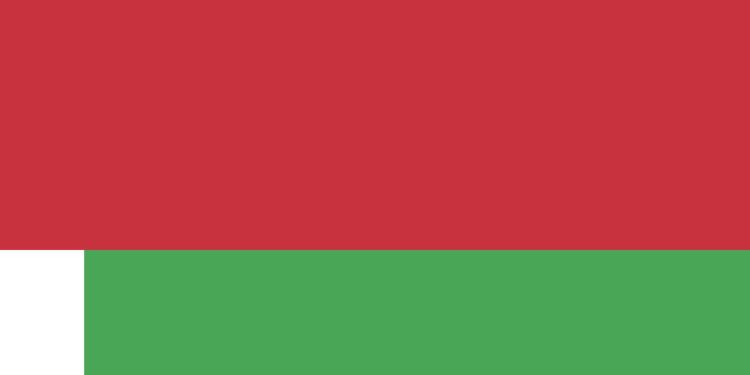Population 9.466 million (2013) GNI per capita 16,950 PPP dollars (2013) | Life expectancy 72.06 years (2012) Population growth rate 0.0% annual change (2013) | |
 | ||
Fertility rate 1.62 births per woman (2012) | ||
The demographics of Belarus is about the demographic features of the population of Belarus, including population growth, population density, ethnicity, education level, health, economic status, religious affiliations, and other aspects of the population. The ethnic majority in Belarus are called Belarusians.
Contents
- Map of Belarus
- Demographic trends
- Population
- Age structure
- Median age
- Sex ratio
- Belarusian provinces of the Russian Empire
- Infant mortality rate
- Life expectancy at birth
- Natural increase current
- Ethnic groups
- Prior to the Second World War
- After the Second World War
- Languages
- Religion
- Urbanization
- References
Map of Belarus
Demographic trends
The population of Belarus suffered a dramatic decline during World War II, dropping from more than 9 million in 1940 to 7.7 million in 1951. It then resumed its long-term growth, rising to 10 million in 1999. After that the population began a steady decline, dropping to 9.7 million in 2006-2007. Originally a highly agrarian country with nearly 80% of its population in rural areas, Belarus has been undergoing a process of continuous urbanization. The share of its rural population decreased from 70% in 1959 to less than 30% in the 2000s.
Population
9,608,058 (July 2014 est.)country comparison to the world: 93Age structure
0-14 years: 15.4% (male 759,285/female 717,118)15-24 years: 11.7% (male 575,907/female 544,170)25-54 years: 45.5% (male 2,141,419/female 2,227,433)55-64 years: 13.3% (male 562,639/female 716,216)65 years and over: 14.2% (male 430,225/female 933,646) (2014 est.)Median age
Total: 39.4 yearsMale: 36.3 yearsFemale: 42.4 years (2014 est.)Sex ratio
At birth: 1.06 male(s)/female0-14 years: 1.06 male(s)/female15-24 years: 1.06 male(s)/female25-54 years: 0.96 male(s)/female55-64 years: 0.87 male(s)/female65 years and over: 0.46 male(s)/femaleTotal population: 0.87 male(s)/female (2014 est.)Belarusian provinces of the Russian Empire
The figures below refer to the five governorates of the Russian Empire (Grodno, Vitebsk, Minsk, Mogilev, Vilna, ) with a Belarusian majority.
Infant mortality rate
Total: 4.0 deaths/1,000 live births for 429 death. (2010)Total: 3.9 deaths/1,000 live births for 422 death. (2011)Total: 3.4 deaths/1,000 live births for 386 death. (2012)Total: 3.5 deaths/1,000 live births for 407 death. (2013)Total: 3.5 deaths/1,000 live births for 415 death. (2014)Total: 3.5 deaths/1,000 live births for 321 death. (January–September 2014)Total: 3.2 deaths/1,000 live births for 283 death. (January–September 2015)Life expectancy at birth
Total population: 72.15 yearscountry comparison to the world: 138Male: 66.53 yearsFemale: 78.1 years (2014 est.)Natural increase current
Since the beginning of the year 2016 population of Belarus increased by 6 799 people during the period January–September. In January–September 2016, 89 434 babies were born in the country, which is 455 babies more than in January–September 2015
-Number of births from January–September 2015 = 88,979
-Number of births from January–September 2016 = 89,434
Conversely the number of deaths during the same period was down by 1,825.
-Number of deaths from January-September 2015 = 90,741
-Number of deaths from January–September 2016 = 88,916
Total natural increase during January-September 2016 and January-September 2015.
Natural increase between January–September 2015 = -1,762
Natural increase between January–September 2016 = 518
Ethnic groups
Belarusians 81.2%, Russians 11.4%, Poles 3.9%, Ukrainians 2.4%, Jews 0.3%, Armenians 0.1%, Lipka Tatars 0.1%, Ruska Roma 0.1%, Lithuanians 0.1%, Azerbaijanis 0.1%, others 0.3% (1999 census).Prior to the Second World War
Prior to World War II, Jews were the second largest ethnic group in Belarus, and at 400,000 in the 1926 and 1939 censuses they even exceeded the number of Russians (although admittedly by a small margin). Jews accounted for 7%-8% of the total population at that time, comprising more than 40% of the population in cities and towns, where Jews and Poles were the majority, while Belarusians mostly lived in rural areas.
The Poles were the fourth largest ethnic group in Belarussian SSR (current Eastern portion of Belarus), before World War II, comprising 1-2% of the population in the pre-war censuses (less than 100,000).
After the Second World War
The Holocaust decimated the Jewish population in Belarus, and after World War II, in 1959, Jews accounted for only 1.9% of the population. Since then, Jewish emigration to Israel and other countries reduced the number of Jews to 0.1% of the population (13,000 in 2009).
After the war, a large number of Poles (including Catholic Belarusians) were forced to move to Poland. In exchange, Belarusians from the former Belastok Voblast, which was returned to Poland in 1945, after being occupied in 1939 were displaced to Belarus. Due to changes in the western border of Belarus and Poland after World War II (see territorial changes of Poland), the number of Poles in Belarus increased to more than 500,000 according to the first post-war census (1959) and to about 400,000 according to the 1999 census. Poles are now the third largest ethnic group in Belarus (see Polish minority in Belarus). There are around 15,000 of Lipka Tatars and Ruska Roma (Russian Gypsies) who account for about 10,000 each.
In the post-war period Belarus experienced an influx of workers from other parts of the Soviet Union, for example Russians and Ukrainians. The decade after independence saw a decline in the population of most of these minority groups, either by assimilation or emigration. The most significant exception to this trend has been a continued (if small-scale) net immigration of Armenians and Azeris, whose numbers increased from less than 2,000 in 1959 to around 10,000 in 1999.
Languages
Belarusian and Russian are the official languages according to the Constitution of Belarus (Article 17). The constitution guarantees preservation of the cultural heritage of all ethnic minorities, including their languages (Article 15). Russian, and not Belarusian, is the dominant language in Belarus, spoken normally at home by 70% of the population (2009 census).
Religion
According to 1997 estimates, 80% of the religious population belonged to the Eastern Orthodox Church and the others are mainly Roman Catholic, Greek Catholic, Protestants, Muslims, and Jews.
